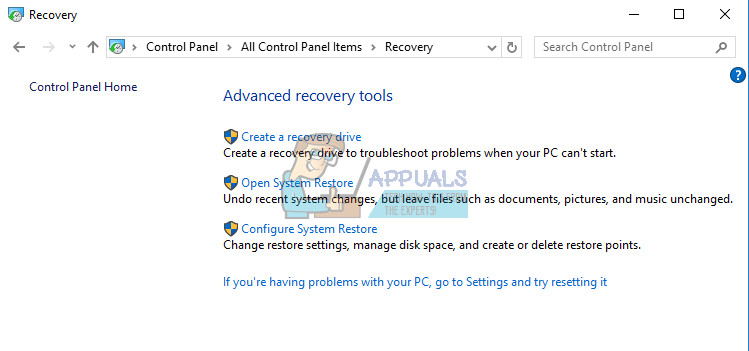The amount of errors you are able to receive with each copy of Windows increases exponentially with the number of programs you have installed and know that each program can cause some issues, no matter who developed it and how. Let’s check out this audio-related problem. This particular error message is related to the Conexant Audio Filter Agent, which is an integral component of Conexant High Definition Audio program. Some computers arrive with this program built-in which makes the issue even more complicated because users are not sure whether they should remove it or not.
A simple Google search will reveal that this is not a deed made by some malicious application but getting rid of this message would certainly make anyone’s day much better. Let’s find out how to achieve this.
Solution 1: Disable All Other Sound Drivers
If this program came preinstalled with your computer, this may be your best choice for a sound driver. However, having multiple sound drivers installed may lead to issues where you won’t be able to configure sound properly and you will always receive this error message. This can be fixed by uninstalling all other sound drivers.
Solution 2: Check to See If the Issue Appears in Clean Boot
If the issue appears in clean boot, it may be time to disable the Conexant SmartAudioHD completely, especially if you are not using as your default audio driver and manager. If it came preinstalled on your computer and you decided to use another audio driver without uninstalling the Conexant one, this issue may appear. Follow the instructions below in order to perform a clean boot. If the issue persists it’s time to remove the audio manager from starting up at all. This can be done easily while returning to Normal Startup.
Solution 3: Run the Program in Compatibility Mode for Your Operating System
Sometimes the Conexant audio manager simply works using the wrong operating system as its guide. This means that it’s running for a version other than the operating system you have installed. You can change this easily by following the instructions below.
Solution 4: Use the Built-In Audio Troubleshooter
You can easily troubleshoot audio-related issues by using the troubleshooter for sound in the Settings app. Windows definitely comes prepared when it comes to troubleshooting because the Settings app holds a place for plenty of troubleshooters for various things which can go wrong on your device. Troubleshooting Windows 10 issues can be quite useful because it can show you just where the problem is or it can even fix the problem for you automatically.
Solution 5: Updating or Uninstalling the Conexant Audio Driver
If you are not using the Conexant audio driver, you can uninstall it easily and use the other one you have installed. Even if you are using it, if it displays this issue after you have gone through the steps above, it may be time to replace it with a new one.
Uninstalling the Conexant Driver
Updating the Conexant Driver
If you really want to keep their driver installed on your computer, your driver may simply be outdated and that is a possible reason for why the error message keeps on appearing. Follow the instructions below to update it.
Solution 6: A Solution by Lenovo
Since Lenovo computers and laptops come with these drivers preinstalled, they have provided these solutions as possible fixes for some of the Conexant-related issues, including the one we are dealing with right now. Make sure you check this out.
Disabling All Enhancements
Restart Audio Services
Solution 7: Use System Restore
This particular solution should only be used if all of the methods above have failed. Reverting your system to a previous state is a particularly useful solution but make sure you back everything up before proceeding.
How to Fix No Sounds issues with Conexant Audio/Smartaudio on Windows 10Fix: Outlook crashes with error 0x80000003 (Failed to Initialize)How to fix Failed to initialize BattlEye Service: Generic ErrorHow to fix Failed to initialize BattlEye Service: Driver load error (1450)













